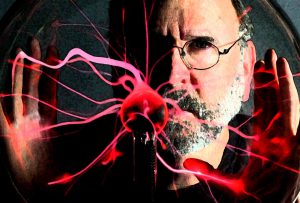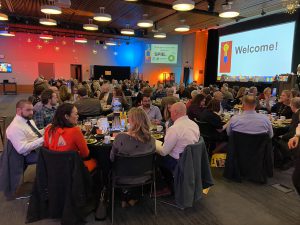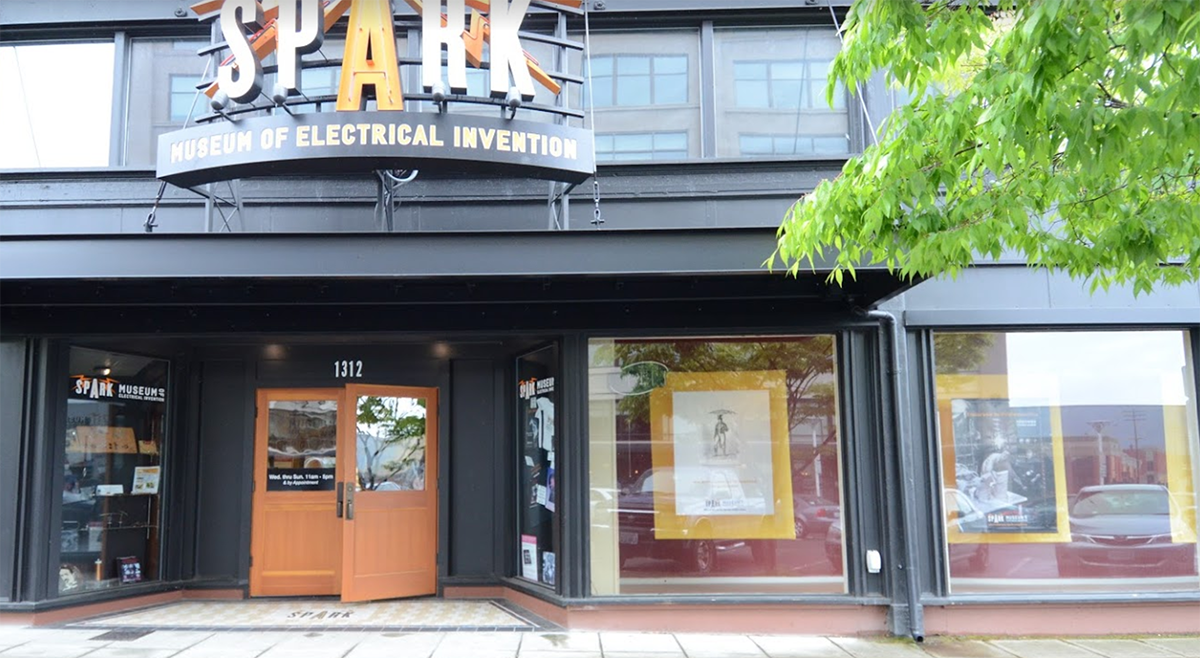
This past year, SPARK Museum of Electrical Invention’s co-founder and CEO, John Jenkins, has led his small team through a pandemic that shuttered the Museum for almost all of the past nine months. Below, John shares his thoughts on what 2020 was like for SPARK Museum and what he’s looking forward to in 2021.
Q: Since March 2020, the COVID-19 pandemic has been devastating for small businesses and nonprofits, not only in Whatcom County but around the state and country. Was SPARK able to take advantage of any programs to help keep staff working or sustain the Museum during the shutdowns?
A: SPARK Museum received a relatively small PPP (Paycheck Protection Program) grant in the first phase of the program. That helped us keep Abby Russell and Tana Granack, our two paid staff members, working. Tana is our director of operations, and Abby is our program coordinator. We’re hoping to see more help in the package just passed by Congress. Like many similar businesses, the Museum has had limited income for eight months this year. We were lucky to have held a successful fundraising event on Feb. 29, literally a week before the first shutdown. Those funds have been crucial to helping us weather this storm. 2021 will be a rebuilding year for us, and I’m optimistic that the community will come together to help us get back on track when this is over.
Q: Abby recently spearheaded a month-long membership drive that ended in mid-December. How did that go?
A: I’m happy to report that the membership drive was a success! We exceeded our goal, not only in terms of total memberships, but new memberships (not renewals) as well. Several members joined at one of the premier levels (silver, gold, platinum or diamond), which is a big help to ensuring the sustainability of SPARK. To show our gratitude to members, all memberships will be automatically extended for the length of time for which the Museum has been closed due to state COVID-19 restrictions.
Q: What is one thing you’re proud of Tana and Abby for working through in 2020?

A: Our greatest success in 2020 has to have been our “Leap into the Future” gala, but the biggest challenge for Tana and Abby (as well as our team of volunteers) is that we miss our visitors. We miss the busloads of kids who come in every week, not really knowing what to expect but leaving wound up and excited about science. We miss the visitors who tell us how amazed they are by what they’ve seen and experienced. We also miss seeing each other. Even though Abby, Tana and I meet regularly on Zoom and occasionally at the Museum, we don’t get to see our volunteers, and we are all really looking forward to getting together and opening the doors again!
We have taken advantage of the closure by working on projects that are difficult to do when we are open. Tana has been busy taking care of the building. He has given our bathrooms a much-needed update with new floors, paint and fixtures. He also has been updating our phone system and has gotten our computers cleaned up and updated, among other things. Most importantly, he has produced a series of outstanding videos highlighting various parts of the Museum and the history of science. You can watch the SPARK SciShorts videos on YouTube.
Abby worked with Deborah Hanuscin and her cohort of preservice teachers at Western Washington University to create a successful science curriculum unit focusing on electrical circuits. The unit, which is aligned with the Next Generation Science Standards, was tested in several local schools, all of which used the unit as a companion to a SPARK field trip. Abby also produced a set of online resources and activities for teachers and parents to use during (and after) the lockdowns.
Q: What about volunteers Ken, Bill, Mark, Gabe, Amy, Dave and Maura? Helping people discover and learn has been a big part of their lives. Have they been helping with any behind-the-scenes projects this year, or are they on hiatus?
A: As you might recall, we were open for a few weeks in the fall. We did see our volunteers then, and they were happy to be back! We’re looking forward to welcoming them back as soon as we get the OK from the governor’s office.
Q: How do you think people will interact with museums in the future? What are you seeing in the industry?
A: One of the things I’ve observed from studying history is that a crisis tends to accelerate trends. Certainly, that will be the case here. There was already a trend toward utilizing advanced digital technology, creating virtual exhibits and museum visits, etc., but that will only be accelerated. That doesn’t mean that people won’t still want to visit museums, but it will make amazing museums around the world more accessible to a broad audience, and that can only be a good thing.
Q: What is SPARK doing during the closures to prepare for that future?
A: Given our limited resources, you won’t find us on the “leading edge” of new museum technology, but we will participate. Our virtual tour may not be a super high-definition 3D immersive experience, but it will still give you a good idea of what it’s like to visit the SPARK Museum!
Q: Are there any other changes or updates we can expect from SPARK in 2021?
A: I know we aren’t alone as we look forward to saying goodbye to 2020. Our focus in 2021 will be to get back to the successful footing we had going into 2020. It will be a rebuilding year, a year where we strengthen our community connections and programs while continuing to focus on our primary mission — ensuring our visitors have an amazing experience. We are constantly exploring, developing and expanding our interactive curriculum, especially for larger groups and school field trips. The spectrum of sound, a new plasma presentation, and fantastic new props and devices are all happening soon, and we can’t wait to share those with everyone. We still don’t know when we will see those yellow school buses pull up out front, but you can bet that when they do, we’ll be ready!
